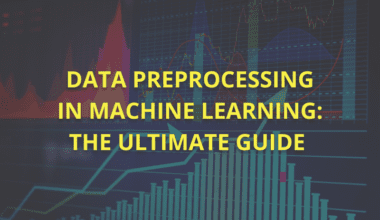Summary: How to Optimise Your LinkedIn as a Data Scientist by crafting a compelling profile, highlighting skills, and engaging with industry professionals. Showcase projects, earn endorsements, and leverage LinkedIn’s features to boost visibility. Keep learning with Pickl.AI’s Data Science Job Guarantee Program to advance your career.
Introduction
LinkedIn is your digital resume, networking hub, and job-hunting powerhouse—all in one place! As a data scientist, you need more than just a profile; you need a profile that stands out.
With LinkedIn users expected to grow by 171.9 million between 2024 and 2028, competition is only getting tougher. So, how do you stay ahead? That’s exactly what we’ll uncover in this guide on how to optimize your LinkedIn as a data scientist?
By the end, you’ll know how to craft a compelling profile, attract recruiters, and grow your network like a pro. Ready to level up? Let’s go!
Key Takeaways
- Use a professional photo and write a compelling, keyword-rich headline.
- Showcase skills, projects, and certifications to strengthen credibility.
- Stay active by posting insights, engaging with posts, and networking.
- Leverage LinkedIn’s features like job alerts, endorsements, and recommendations.
- Enhance your data science skills with Pickl.AI’s expert-led courses.
Setting Up a Strong LinkedIn Profile
LinkedIn is the largest professional networking platform, with over 1 billion members across 200+ countries. A well-optimized profile helps data scientists attract recruiters, build connections, and showcase expertise. Follow these steps to create a strong profile.
Choosing the Right Professional Profile Picture
Your profile picture is your first impression. Use a clear, high-quality headshot with good lighting and a neutral background. Wear professional or business-casual attire and ensure your face is visible. Avoid group photos or selfies. A confident smile makes you appear approachable and trustworthy.
Crafting an Attention-Grabbing Headline
Your headline should instantly convey your role and expertise. Instead of just “Data Scientist,” use something like “Data Scientist | Machine Learning Enthusiast | AI-Driven Problem Solver.” This highlights your skills and attracts the right audience. Use relevant keywords so recruiters can find you easily.
Writing an Engaging and Keyword-Rich Summary
Your summary tells your professional story. Write clearly, conversationally, mentioning your skills, experience, and passion for data science. Include keywords like “data analysis,” “machine learning,” and “Python” to improve visibility. Keep it concise and focus on how you add value to employers or collaborators.
Optimizing Your Experience and Skills Section
Around 72% of recruiters use LinkedIn to find and hire new talent. Having a well-structured experience and skills section helps you stand out. It shows recruiters what you have done, what you are good at, and how you can add value to their company. Follow these steps to optimize this section.
Showcasing Relevant Work Experience with Quantifiable Achievements
List your work experience in a clear and structured way. Mention your job title, company name, and the time you worked there. Instead of just listing tasks, focus on your achievements. Use numbers to show impact. For example, instead of “Analyzed data for business decisions,” write “Analyzed customer data, increasing sales by 15%.” Numbers make your work more impressive and credible.
Highlighting Technical and Soft Skills Effectively
Include both technical and soft skills to show you are well-rounded. For example, a data scientist might list Python, SQL, and machine learning as technical skills. Soft skills like problem-solving, teamwork, and communication are equally important. Recruiters look for candidates who know the tools and can work well in a team.
Adding Industry-Specific Certifications and Courses
Certifications prove your expertise and commitment to learning. Add courses from platforms like Pickl.AI or LinkedIn Learning. Industry-recognized certifications, such as Google Data Analytics or Microsoft Azure AI Fundamentals, boost credibility and improve job prospects.
Enhancing Your LinkedIn Activity for Visibility
A well-optimized LinkedIn profile is essential, but staying active on the platform makes a big difference. Regular engagement increases your visibility, helps you connect with the right people, and positions you as a knowledgeable professional. Here’s how you can stay active and grow your presence.
Posting Insightful Content Related to Data Science
Sharing valuable content helps you stand out. Post about your learnings, industry trends, or personal experiences in data science. You can share blog articles, case studies, or insights from projects you have worked on. Keep your posts simple, informative, and engaging. If you’re new to posting, start by summarizing interesting articles and adding your thoughts.
Engaging with Posts, Commenting, and Sharing Relevant Articles
Interacting with others’ content increases your visibility. Like, comment, and share posts from professionals in your field. Meaningful comments help you get noticed and start conversations. If you find a useful article, share it with your network and add your perspective. This shows your interest in the field and builds credibility.
Following Industry Leaders and Participating in Discussions
Follow well-known data scientists, AI researchers, and industry experts. Engage in discussions by asking questions or sharing opinions. Join LinkedIn groups related to data science to connect with like-minded professionals. Active participation helps you stay updated and grow your network.
Building a Strong Professional Network
A strong LinkedIn network can open doors to new job opportunities, collaborations, and industry insights. As a data scientist, connecting with the right people helps you stay updated with trends, find mentors, and get noticed by recruiters. Here’s how to build a powerful LinkedIn network.
Connecting Strategically with Data Scientists and Recruiters
Instead of randomly adding people, focus on connecting with professionals in your field. Follow experienced data scientists, recruiters, and industry leaders. Engaging with their content by liking, commenting, and sharing their posts increases your visibility. Connecting with recruiters who specialize in data science roles can also help you find job opportunities faster.
Personalizing Connection Requests for Better Responses
Sending a personalized message with your connection request increases the chances of acceptance. Instead of just clicking “Connect,” write a short message explaining why you want to connect.
For example:
“Hi [Name], I admire your work in data science and would love to connect to learn from your insights.”
A friendly and professional approach makes your request more meaningful.
Leveraging LinkedIn Groups and Communities for Networking
Join LinkedIn groups related to data science, AI, and analytics. Participate in discussions, ask questions, and share your thoughts. Engaging in these groups helps you connect with like-minded professionals, learn from experts, and grow your network organically.
Showcasing Projects and Portfolio
A strong portfolio helps data scientists stand out by showing real-world skills. Recruiters and potential employers look for hands-on experience, so showcasing your work effectively can boost your chances of getting noticed. Here’s how you can display your projects on LinkedIn.
Adding GitHub, Kaggle, or Personal Blog Links
If you have coding projects, upload them to GitHub or Kaggle and add the links to your LinkedIn profile. This allows recruiters to see your work, coding style, and problem-solving approach. If you write about data science, share your personal blog link to highlight your knowledge and communication skills.
Highlighting Key Projects in the Featured Section
LinkedIn’s Featured section allows you to pin your best work. Add links to your most impressive projects, research papers, or articles. Choose projects that showcase your skills in data analysis, machine learning, or AI. This makes it easy for visitors to find and review your work.
Using Media and Documents to Showcase Work Visually
Visual content grabs attention. Upload charts, infographics, reports, or dashboards to make your work more engaging. If you’ve presented at events, share slides or videos. A well-organized portfolio helps people understand your expertise quickly and builds credibility.
Leveraging LinkedIn for Job Opportunities
LinkedIn is a powerful tool for job seekers. Many companies and recruiters use it to find candidates for data science roles. Using the right features increases your chances of getting noticed and landing your dream job.
Setting Job Alerts for Data Science Roles
Job alerts help you stay updated on the latest openings. Go to the Jobs section, search for “Data Scientist,” and apply filters like location, experience level, and company. Click “Set Alert” to receive notifications when new jobs match your criteria. This saves time and ensures you never miss an opportunity.
Optimizing the “Open to Work” Feature Effectively
The “Open to Work” feature lets recruiters know you are looking for a job. You can choose to show this to all LinkedIn users or only to recruiters. Add details like job titles, locations, and work preferences to attract the right opportunities. A well-optimized profile increases your chances of getting approached by hiring managers.
Engaging with Recruiters and Hiring Managers
Connecting with recruiters can improve your job search. Send personalized connection requests, mentioning your interest in data science roles. Engage with their posts and respond professionally to messages. A proactive approach can help you stand out from other applicants.
Leveraging Recommendations and Endorsements
Recommendations and endorsements add credibility to your LinkedIn profile. They show that others recognize your skills and value your work. A strong profile with recommendations and endorsements increases trust and makes you stand out to recruiters and connections. Here’s how to use them effectively.
Requesting Recommendations from Colleagues and Mentors
A LinkedIn recommendation is like a short reference letter. Ask former managers, colleagues, or mentors to write one for you. Be specific about what you’d like them to highlight when requesting a recommendation. For example, if you worked on a data science project together, ask them to mention your problem-solving skills or teamwork. A well-written recommendation strengthens your professional image.
Endorsing Skills and Receiving Endorsements from Peers
Endorsements validate your skills and make your profile more visible in LinkedIn searches. List relevant skills like “Data Analysis” or “Machine Learning” in your profile. Your connections can then endorse these skills, showing potential employers you are knowledgeable. To receive more endorsements, endorse your peers first—they will likely return the favor.
Writing Thoughtful Recommendations for Others
Writing recommendations for colleagues helps build strong professional relationships. Focus on their strengths and specific contributions. A detailed and positive recommendation can encourage them to write one for you. This creates a supportive network and boosts credibility for everyone involved.
Staying Updated and Continuous Improvement
Optimizing your LinkedIn profile is not a one-time task. To stay visible and relevant, you must update your profile regularly and take advantage of new LinkedIn features. A well-maintained profile attracts recruiters, showcases your growth, and strengthens your professional presence.
Regularly Update Your Profile with New Skills and Experiences
As you gain new skills or take on new projects, update your profile to reflect these changes. Add completed courses, certifications, or recent work experiences to show your continuous learning. Keeping your profile fresh makes you more appealing to recruiters and connections.
Monitor LinkedIn Analytics for Profile Performance
LinkedIn provides insights into how many people view your profile and how often you appear in searches. Check these analytics to understand what’s working and what needs improvement. If your profile isn’t attracting views, consider updating your headline, summary, or skills section.
Stay Updated with LinkedIn’s Latest Features
LinkedIn frequently introduces new tools to help professionals stand out. Stay informed about updates like Creator Mode, Featured Sections, or AI-powered job recommendations. Using these features effectively can increase your profile’s visibility and engagement.
Data Scientist LinkedIn Profile Example
Marla Smith, Senior Data Scientist at ABC Company
Summary: Experienced data scientist with a strong background in statistical analysis, machine learning, and data visualisation. Skilled in programming languages such as Python, R, and SQL and have worked on various projects involving predictive modelling, clustering, and classification. Passionate about leveraging data to drive business decisions and improve customer experience.
Experience:
- Senior Data Scientist at ABC Company (2018-present)
- Data Scientist at XYZ Corporation (2016-2018)
Education:
- Master’s in Data Science, University of California, Berkeley (2016)
- Bachelor’s in Computer Science, Stanford University (2014)
Skills:
- Machine Learning
- Data Analysis
- Python
- R
- SQL
- Tableau
- Statistical Modeling
For additional help creating a strong portfolio, you can check out the Data Scientist Resume Guide.
Wrapping It Up
Optimizing your LinkedIn profile as a data scientist helps you stand out, connect with industry leaders, and attract recruiters. A well-structured profile, active engagement, and networking open doors to exciting opportunities. Keep updating your skills, showcase your projects, and stay informed about LinkedIn’s latest features.
If you’re looking to sharpen your data science expertise, consider enrolling in Pickl.AI’s Data Science Job Guarantee Program. This program provides hands-on experience, expert mentorship, and job placement support to help you land your dream role. Invest in your career today and start building a LinkedIn presence that truly represents your skills and potential!
Frequently Asked Questions
How do I optimize my LinkedIn profile as a data scientist?
To optimize your LinkedIn profile as a data scientist, use a professional photo, craft an engaging headline, highlight key skills, showcase projects, and stay active. Regularly update your profile and engage with industry professionals to boost visibility and attract recruiters.
Why is LinkedIn important for data scientists?
LinkedIn helps data scientists network, showcase expertise, and access job opportunities. It serves as a digital resume where recruiters actively search for candidates. A strong LinkedIn profile increases your chances of getting noticed and landing a data science role.
What skills should a data scientist highlight on LinkedIn?
A data scientist should highlight skills such as Python, SQL, machine learning, data analysis, and data visualization. Soft skills like problem-solving and communication also improve credibility. Certifications and projects add extra value to your profile.




